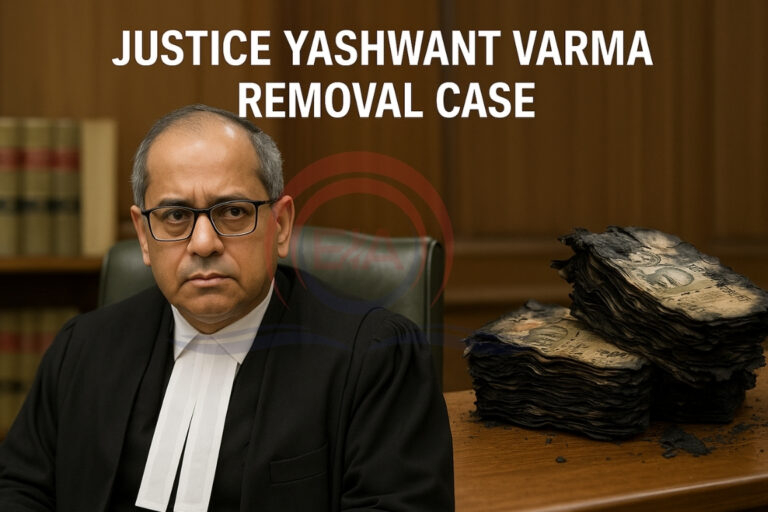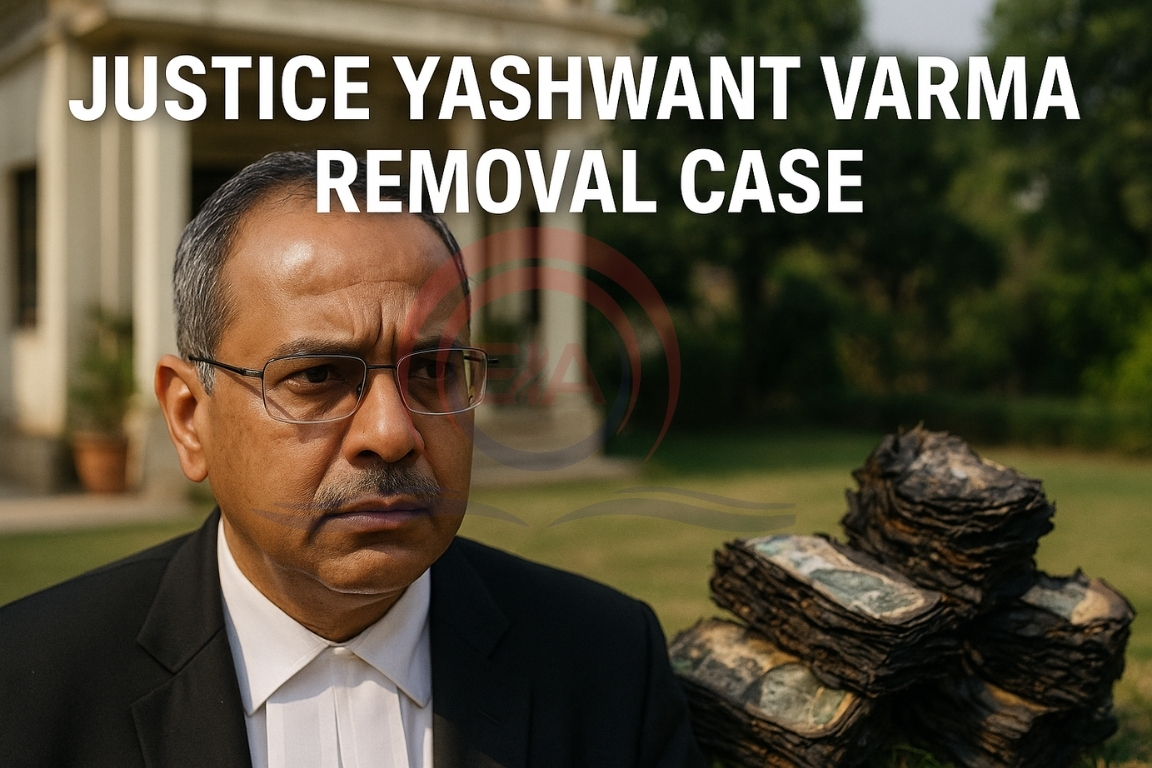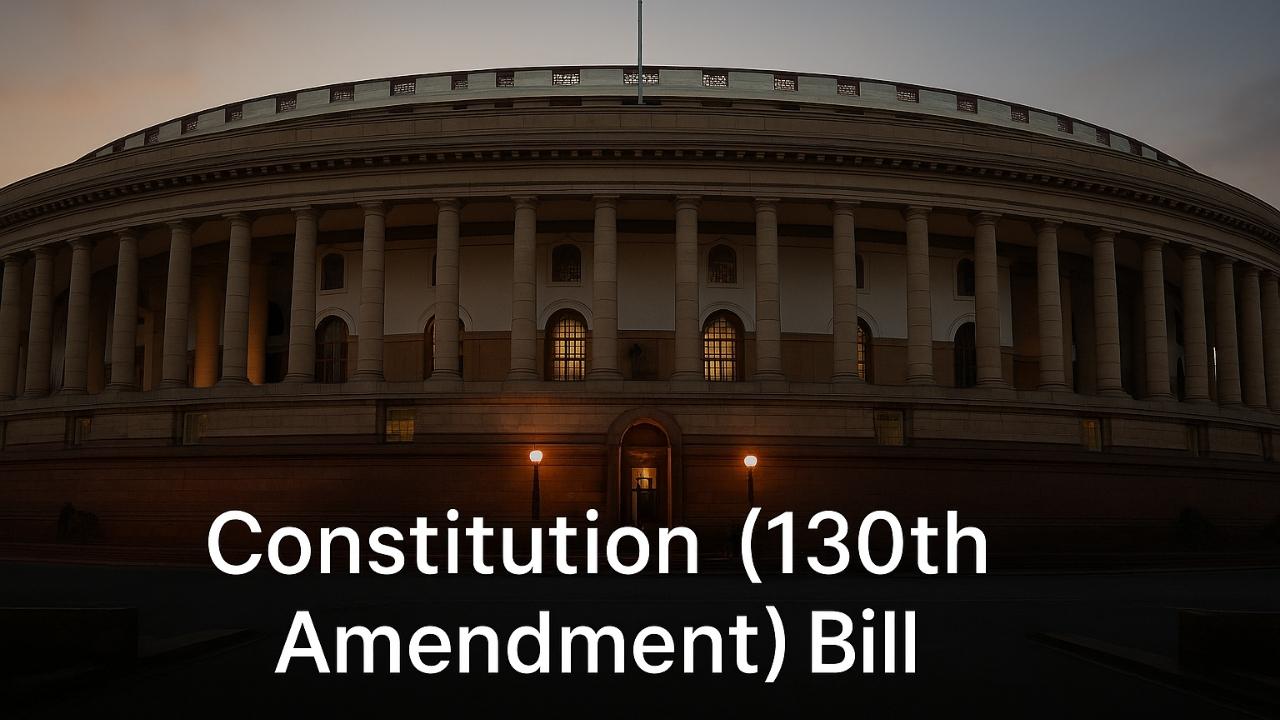The Lok Sabha Speaker has admitted a motion for the removal of Allahabad High Court Judge Justice Yashwant Varma after burnt currency notes were found at his residence. A three-member inquiry committee has been formed to investigate the charges.
Background:
- Justice Varma was transferred from Delhi High Court to Allahabad High Court in March 2025.
- Burnt bundles of cash were discovered at his official residence, leading to suspicion of corruption.
- A Supreme Court in-house probe found him guilty of misconduct.
- Then Chief Justice of India (CJI) Sanjiv Khanna asked him to resign; upon refusal, the CJI forwarded the report to the President and Prime Minister for removal action.
- Justice Varma challenged this in the Supreme Court, but his plea was dismissed.
Current Action by Lok Sabha
- Motion Signed – 146 MPs signed the removal motion.
- Panel Formation – Speaker Om Birla appointed:
- Justice Aravind Kumar (Supreme Court)
- Justice Manindra Mohan Shrivastava (Madras HC Chief Justice)
- Advocate B.V. Acharya (Karnataka HC senior lawyer)
- The committee will submit its report “as early as possible.”
- Until the report is received, the motion remains pending.

Speaker’s Remarks
- Judicial integrity is the foundation of public trust.
- Corruption in the judiciary must be met with zero tolerance.
- Action taken under Judges (Inquiry) Act, 1968 and Articles 124, 217, and 218 of the Constitution.
Constitutional Provisions for Removal of High Court Judges
- Article 217(1)(b) – Judge can be removed by the President on the ground of proved misbehaviour or incapacity.
- Article 218 – Provisions of Article 124 (regarding Supreme Court judges) apply to High Court judges.
- Judges (Inquiry) Act, 1968 – Lays down the procedure for investigation and removal.
JUDGES (INQUIRY) ACT, 1968
The Judges (Inquiry) Act, 1968 lays down the procedure for investigating and removing judges of the Supreme Court and High Courts for misconduct or incapacity, as per Article 124(4) and Article 217 of the Constitution.
Key Provisions of the Judges (Inquiry) Act, 1968
Purpose: Provides a legal framework to investigate allegations of proved misbehaviour or incapacity of a judge.
Who can initiate?
- A motion for removal must be signed by:
- 100 Lok Sabha members or 50 Rajya Sabha members.
Role of the Speaker/Chairman
- The Speaker (Lok Sabha) or Chairman (Rajya Sabha) can admit or refuse the motion.
- If admitted, they constitute a three-member inquiry committee.
Composition of Inquiry Committee
- One Supreme Court judge.
- One Chief Justice of a High Court.
- One eminent jurist.
Committee Procedure
- Committee investigates charges, collects evidence, and allows the judge to defend themselves.
- Submits report to the Speaker/Chairman.
Outcome of Report
- If the committee finds the judge guilty, both Houses of Parliament must pass an address for removal by:
- Special majority (majority of total membership + two-thirds present and voting).
Presidential Role
- The President issues the final order for removal.
Significance
- Reinforces accountability of the higher judiciary.
- Sends a public message of zero tolerance towards corruption.
- Tests the balance between judicial independence and public accountability.
Conclusion:
The Justice Yashwant Varma case underscores that judicial independence must go hand in hand with accountability, ensuring public trust in the system. Swift and transparent action will reinforce faith in the integrity of India’s higher judiciary.





